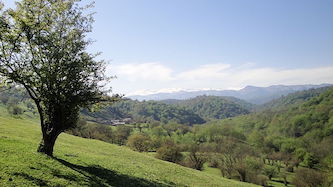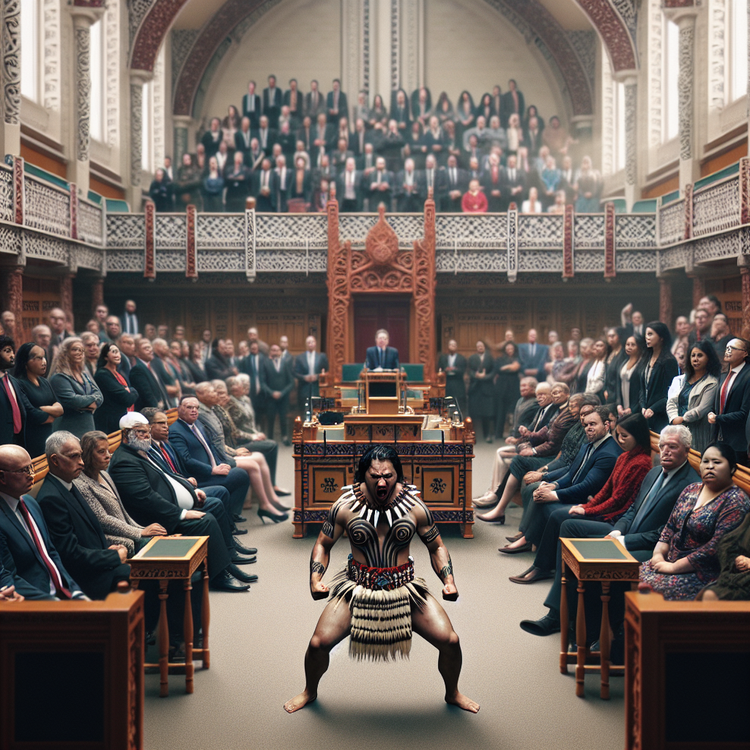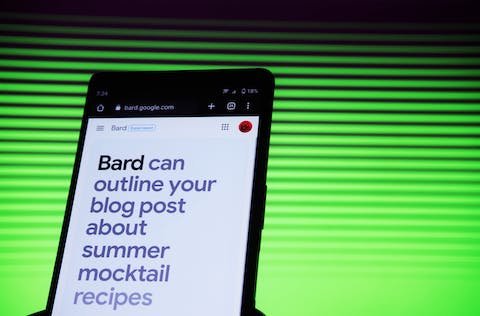The cutting down of a 300-year-old kola tree in Ghana has made many people very upset. The tree was very special because it was thought to have healing powers and had a lot of historical and cultural importance. It was linked to the Ashanti Kingdom from the early 1700s and was connected to a famous priest named Komfo Anokye, who was believed to have spat a kola nut on the ground where the tree stood.
The kola tree was in the town of Feyiase and had been kept safe during the building of a big road because it was a popular place for tourists. The sudden cutting down of the tree has left the community confused and sad. The place where the tree was has a lot of history because it was where the Battle of Feyiase happened, where the Ashanti people fought for their freedom against the kingdom of Denkyira.
Komfo Anokye, a powerful priest, was closely connected to the tree and the area around it. According to stories, he buried a sword in the ground at a hospital in Kumasi that is named after him, and the kola tree was a reminder of his amazing deeds. The tree’s destruction has made people look for those who cut it down, and Ghanaians are expressing their sadness and anger about losing this important cultural and historical symbol.
The director of research at Manhyia Palace, where the Ashanti royal family lives, talked about how important the tree’s location was in the history of the Ashanti Kingdom. People believed that the tree’s black and white seeds could heal, and its destruction has made many Ghanaians very sad. The incident has also got a lot of attention online, with pictures of the cut tree spreading and making many people worried and angry.
Original news source: Komfo Anokye kola tree: Ghana outrage after 300-year-old tree felled (BBC)
Listen
Slow
Normal
Fast
Group or Classroom Activities
Warm-up Activities:
– News Summary
Instructions: Students will work individually to summarize the article in their own words, focusing on the main points: the historical and cultural significance of the kola tree, its connection to Komfo Anokye, the community’s reaction to its cutting, and the significance of the tree’s location. They will then share their summaries with a partner to compare the essential details they’ve each included.
– Opinion Spectrum
Instructions: Print out statements about the event, such as “Historical trees should be protected at all costs,” or “Cultural heritage is more important than modern development.” Place these statements around the classroom and have students stand next to the statement they most agree with. They should be prepared to explain their choice and discuss why they feel that way with the class.
– Keyword Taboo
Instructions: Write down keywords from the article (e.g., kola tree, healing powers, historical importance, Ashanti Kingdom, Komfo Anokye, cultural symbol) on individual cards. In small groups, one student must describe the word on the card without using the keyword itself or the additional taboo words listed on the card, while the others guess the word. This will help reinforce vocabulary from the article.
– Future Predictions
Instructions: After discussing the article, ask students to write a short paragraph predicting the future implications of the tree’s destruction on the community and cultural heritage of Ghana. They should use modal verbs of probability (might, could, will, etc.) to express their ideas. They will then share their predictions with a partner and discuss the potential outcomes.
– Sketch It
Instructions: Divide students into small groups and give each group a different part of the story (e.g., the historical significance of the tree, the reaction of the community, the role of Komfo Anokye). Each group creates a quick sketch or drawing that represents their assigned part of the story. Afterward, they present their drawings to the class and explain how it relates to the article. This activity will help students process the information visually and verbally.
Comprehension Questions:
1. What was the age of the kola tree that was cut down in Ghana?
2. Why was the kola tree considered very special?
3. Who was Komfo Anokye and how was he related to the kola tree?
4. What historical event is associated with the location of the kola tree?
5. How did the community react to the cutting down of the kola tree?
6. What did the kola tree symbolize for the people of Ghana?
7. What has been the response online to the destruction of the kola tree?
8. What did the director of research at Manhyia Palace say about the significance of the tree’s location?
Go to answers ⇩
Listen and Fill in the Gaps:
The cutting down of a 300-year-old kola tree in Ghana has made many people very upset. The tree was very special because it was thought to have healing powers and had a lot of historical and cultural (1)______. It was (2)______ to the Ashanti (3)______ from the early 1700s and was connected to a famous priest named Komfo Anokye, who was (4)______ to have spat a kola nut on the ground where the tree stood.
The kola tree was in the town of (5)______ and had been kept safe during the building of a big road because it was a popular place for tourists. The sudden cutting down of the tree has left the community confused and sad. The place where the tree was has a lot of history because it was where the Battle of Feyiase happened, where the (6)______ people fought for their freedom against the kingdom of (7)______.
Komfo (8)______, a powerful priest, was closely connected to the tree and the area around it. According to stories, he buried a (9)______ in the ground at a hospital in (10)______ that is named after him, and the kola tree was a reminder of his amazing deeds. The tree’s destruction has made people look for those who cut it down, and Ghanaians are expressing their sadness and anger about losing this important (11)______ and (12)______ symbol.
The director of (13)______ at Manhyia Palace, where the Ashanti royal family lives, (14)______ about how important the tree’s location was in the history of the Ashanti Kingdom. People believed that the tree’s black and white seeds could heal, and its destruction has made many (15)______ very sad. The incident has also got a lot of (16)______ online, with pictures of the cut tree spreading and making many people worried and angry.
Go to answers ⇩
Discussion Questions:
Students can ask a partner these questions, or discuss them as a group.
1. What is a historical landmark that you know about in your own country? Why is it important?
2. How would you feel if a famous natural site in your hometown was destroyed? Why?
3. Do you like visiting places with a lot of history? Why or why not?
4. Do you think trees can be as important as monuments or buildings? Why?
5. What is a tradition or story from your culture that involves nature or a specific tree?
6. How do you think a community should protect its important natural landmarks?
7. Have you ever been to a place that was said to have healing powers? What was it like?
8. Do you believe in the healing powers of certain natural objects? Why or why not?
9. What do you think makes a place special enough to become a tourist attraction?
10. How would you explain the importance of preserving historical sites to someone younger than you?
11. Do you think the internet is a good way to share information about cultural losses? Why?
12. What is your opinion on cutting down trees for development, like building roads?
13. Have you ever participated in any activities to save or protect a historical or natural site? What did you do?
14. Do you think the history of a place can affect its present and future? How so?
15. Can you think of a symbol that represents your country or culture? What does it mean to you and others?
Individual Activities
Vocabulary Meanings:
Match each word to its meaning.
Words:
1. kola
2. Ghana
3. upset
4. healing
5. historical
6. road
7. community
8. destruction
Meanings:
(a) A type of nut with caffeine
(b) A group of people living in the same area
(c) Making someone feel sad or angry
(d) A country in West Africa
(e) The act of causing great damage or harm
(f) The act of making something healthy again
(g) A path for cars to travel on
(h) Connected to the past
Go to answers ⇩
Multiple Choice Questions:
1. Why was the 300-year-old kola tree in Ghana so special?
(a) It was the tallest tree in Ghana
(b) It was the only tree in the town of Feyiase
(c) It was thought to have healing powers and had historical and cultural importance
(d) It was the oldest tree in Africa
2. What was the kola tree linked to from the early 1700s?
(a) The Ashanti Kingdom
(b) The British Empire
(c) The Egyptian civilization
(d) The Roman Empire
3. What happened at the place where the kola tree was located?
(a) A big party
(b) The Battle of Feyiase
(c) A religious ceremony
(d) A market
4. Who was Komfo Anokye?
(a) A warrior
(b) A king
(c) A merchant
(d) A famous priest
5. What did Komfo Anokye do at the hospital in Kumasi?
(a) Planted a kola tree
(b) Buried a sword in the ground
(c) Built a statue
(d) Wrote a book
6. What is the director of research at Manhyia Palace talking about?
(a) The weather in Ghana
(b) The best places to visit in Ghana
(c) The types of trees in Ghana
(d) The importance of the tree’s location in the history of the Ashanti Kingdom
7. What did people believe the kola tree’s seeds could do?
(a) Heal
(b) Fly
(c) Sing
(d) Change color
8. What has the incident of the tree’s destruction caused among Ghanaians?
(a) Happiness and excitement
(b) Indifference
(c) Sadness and anger
(d) Confusion and surprise
Go to answers ⇩
True or False Questions:
1. The tree was considered special because it was believed to have healing powers and had a lot of historical and cultural significance.
2. A 300-year-old kola tree in Ghana was recently planted, causing a lot of excitement among the local people.
3. The tree was located in the town of Feyiase and was spared during the construction of a road due to its popularity with tourists.
4. It was linked to the Ashanti Kingdom from the early 1700s and was connected to a famous priest named Komfo Anokye.
5. Komfo Anokye, a powerless priest, was loosely connected to the tree and the area around it, and his deeds were forgotten through the tree.
6. The gradual growth of the tree has left the community feeling enlightened and happy, as the tree was tied to the Battle of Feyiase, an insignificant historical event.
7. The preservation of the tree has caused a lot of joy and contentment among Ghanaians, who are celebrating those responsible for planting it.
8. The incident has gained attention online, with many people expressing their worry and anger over the loss of this important cultural and historical symbol.
Go to answers ⇩
Write a Summary:
Write a summary of this news article in two sentences.
Check your writing now with the best free AI for English writing!
Writing Questions:
Answer the following questions. Write as much as you can for each answer.
Check your answers with our free English writing assistant!
1. Why are people in Ghana upset about the cutting down of the kola tree?
2. What historical and cultural significance did the kola tree have?
3. How was the kola tree connected to the Ashanti Kingdom and Komfo Anokye?
4. What has been the community’s reaction to the destruction of the kola tree?
5. Why has the incident of the tree being cut down received a lot of attention on the internet?
Answers
Comprehension Question Answers:
1. What was the age of the kola tree that was cut down in Ghana?
The kola tree was 300 years old when it was cut down.
2. Why was the kola tree considered very special?
The kola tree was considered very special because it was believed to have healing powers and it had significant historical and cultural importance, particularly in relation to the Ashanti Kingdom and the priest Komfo Anokye.
3. Who was Komfo Anokye and how was he related to the kola tree?
Komfo Anokye was a famous priest who was believed to have spat a kola nut on the ground where the tree stood, and he had a strong connection to the tree and the area around it.
4. What historical event is associated with the location of the kola tree?
The Battle of Feyiase, where the Ashanti people fought for their freedom against the kingdom of Denkyira, is associated with the location of the kola tree.
5. How did the community react to the cutting down of the kola tree?
The community was left confused and sad by the sudden cutting down of the kola tree.
6. What did the kola tree symbolize for the people of Ghana?
The kola tree symbolized the historical and cultural heritage of Ghana, and it was a reminder of the Ashanti Kingdom’s past and the deeds of Komfo Anokye.
7. What has been the response online to the destruction of the kola tree?
The response online has been one of sadness and anger, with pictures of the cut tree spreading and causing concern among many people.
8. What did the director of research at Manhyia Palace say about the significance of the tree’s location?
The director of research at Manhyia Palace highlighted the importance of the tree’s location in the history of the Ashanti Kingdom and mentioned the belief in the tree’s healing powers due to its black and white seeds.
Go back to questions ⇧
Listen and Fill in the Gaps Answers:
(1) importance
(2) linked
(3) Kingdom
(4) believed
(5) Feyiase
(6) Ashanti
(7) Denkyira
(8) Anokye
(9) sword
(10) Kumasi
(11) cultural
(12) historical
(13) research
(14) talked
(15) Ghanaians
(16) attention
Go back to questions ⇧
Vocabulary Meanings Answers:
1. kola
Answer: (c) Making someone feel sad or angry
2. Ghana
Answer: (f) The act of making something healthy again
3. upset
Answer: (d) A country in West Africa
4. healing
Answer: (h) Connected to the past
5. historical
Answer: (g) A path for cars to travel on
6. road
Answer: (b) A group of people living in the same area
7. community
Answer: (a) A type of nut with caffeine
8. destruction
Answer: (e) The act of causing great damage or harm
Go back to questions ⇧
Multiple Choice Answers:
1. Why was the 300-year-old kola tree in Ghana so special?
Answer: (c) It was thought to have healing powers and had historical and cultural importance
2. What was the kola tree linked to from the early 1700s?
Answer: (a) The Ashanti Kingdom
3. What happened at the place where the kola tree was located?
Answer: (b) The Battle of Feyiase
4. Who was Komfo Anokye?
Answer: (d) A famous priest
5. What did Komfo Anokye do at the hospital in Kumasi?
Answer: (b) Buried a sword in the ground
6. What is the director of research at Manhyia Palace talking about?
Answer: (d) The importance of the tree’s location in the history of the Ashanti Kingdom
7. What did people believe the kola tree’s seeds could do?
Answer: (a) Heal
8. What has the incident of the tree’s destruction caused among Ghanaians?
Answer: (c) Sadness and anger
Go back to questions ⇧
True or False Answers:
1. The tree was considered special because it was believed to have healing powers and had a lot of historical and cultural significance. (Answer: True)
2. A 300-year-old kola tree in Ghana was recently planted, causing a lot of excitement among the local people. (Answer: False)
3. The tree was located in the town of Feyiase and was spared during the construction of a road due to its popularity with tourists. (Answer: True)
4. It was linked to the Ashanti Kingdom from the early 1700s and was connected to a famous priest named Komfo Anokye. (Answer: True)
5. Komfo Anokye, a powerless priest, was loosely connected to the tree and the area around it, and his deeds were forgotten through the tree. (Answer: False)
6. The gradual growth of the tree has left the community feeling enlightened and happy, as the tree was tied to the Battle of Feyiase, an insignificant historical event. (Answer: False)
7. The preservation of the tree has caused a lot of joy and contentment among Ghanaians, who are celebrating those responsible for planting it. (Answer: False)
8. The incident has gained attention online, with many people expressing their worry and anger over the loss of this important cultural and historical symbol. (Answer: True)
Go back to questions ⇧













